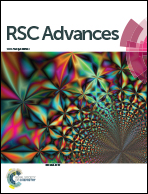Size dependence of the equation of state for Ne nanoclusters from an effective two-body potential via molecular dynamics simulations
Abstract
In this paper we have extended the equation of state (EoS) in terms of particle size for Ne nanoclusters using an effective two-body Hartree–Fock dispersion (HFD)-like potential by molecular dynamics simulations. To take quantum and many-body forces into account, a new simple and accurate empirical expression is used with the HFD-like potential without requiring an expensive three-body calculation. Some features of the EoS criteria, such as the temperature and size dependences of the coefficients, the isothermal bulk modulus and its pressure derivative at the zero-pressure limit, and the isobaric thermal expansion for Ne nanoclusters have been also investigated. The results indicate that the bulk modulus and isobaric expansion coefficient increase as the cluster size decreases.


 Please wait while we load your content...
Please wait while we load your content...